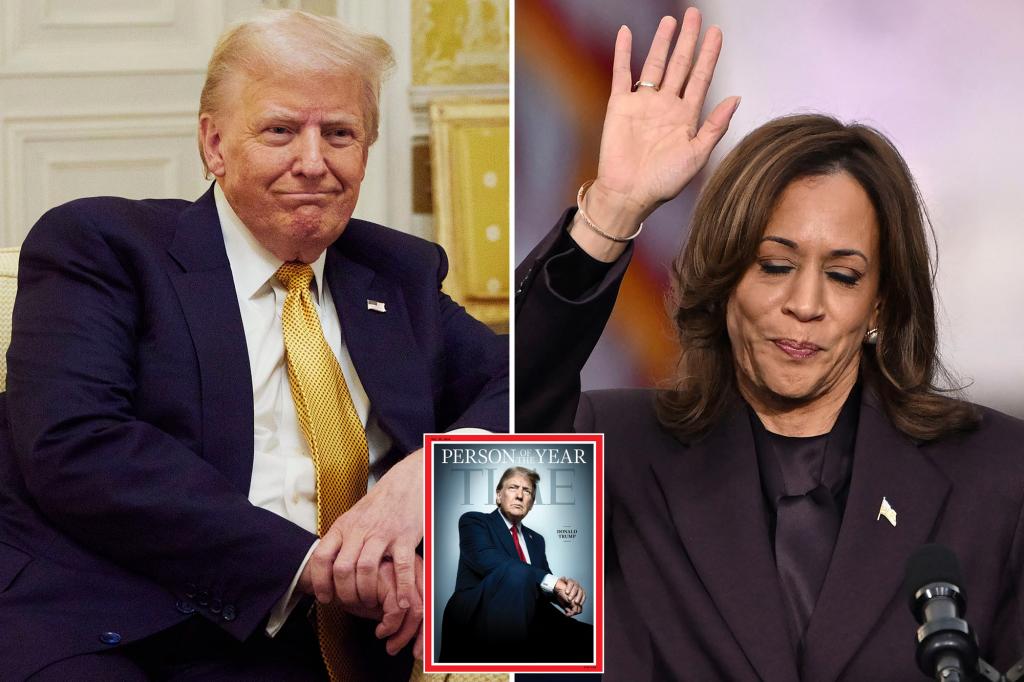Donald Trump’s recent interview with Time magazine, conducted on the occasion of his being named the publication’s 2024 Person of the Year, offered a critical analysis of Vice President Kamala Harris’s unsuccessful 2020 presidential campaign. Trump attributed Harris’s failure primarily to her decision to run in the first place, arguing that she lacked a clear understanding of her own strengths and failed to connect with a broader electorate. He contrasted her approach with his own, emphasizing his willingness to engage with various media platforms, including podcasts and online streamers, to reach a wider audience.
Trump pointedly criticized Harris’s limited media engagement during her campaign, suggesting that her reluctance to participate in interviews and interact with diverse media outlets raised questions about her capabilities and ultimately contributed to her downfall. He highlighted his own extensive media interactions, including a lengthy interview with Joe Rogan, as evidence of his strategy to engage directly with the public and build a broader base of support. This willingness, he argued, demonstrated a proactive approach to connecting with potential voters and contrasted sharply with Harris’s more reserved approach. He implied that this difference in media strategy played a significant role in the differing outcomes of their respective campaigns.
According to Trump, Harris’s campaign failed to gain traction because she didn’t effectively leverage the available media landscape. He contrasted her approach with his own, emphasizing his willingness to engage with non-traditional media outlets, like podcasts and online streamers, to reach a wider audience. He specifically mentioned his interview with Joe Rogan, known for his long-form conversations and diverse listenership, as an example of his successful media strategy. This, he suggested, allowed him to connect with voters outside the traditional media sphere, a strategy he believed Harris failed to utilize effectively.
Trump’s critique of Harris’s campaign centered on what he perceived as a fundamental misunderstanding of her own strengths and a failure to connect with a broader electorate. He suggested that her decision to run for president was a miscalculation, arguing that she lacked the necessary qualities to succeed. This assessment, presented alongside his own self-proclaimed media savvy and broad appeal, served to reinforce the narrative of his political acumen and ability to connect with the public, a key factor he attributed to his own election victory.
The contrast between Trump’s and Harris’s media strategies, as described by Trump, highlights a broader shift in the political landscape. Trump’s embrace of non-traditional media platforms, such as podcasts and online streaming, reflects a growing trend in political communication, where candidates seek to bypass traditional media outlets and engage directly with voters. This strategy, while potentially controversial, allows candidates to control the narrative and reach specific demographics directly. Harris’s perceived failure to capitalize on these platforms, in Trump’s view, contributed to her inability to build a broad base of support.
Trump’s analysis of Harris’s campaign, while subjective, offers a glimpse into his understanding of modern political strategy. His emphasis on direct engagement with voters through diverse media platforms reflects a broader trend in political communication, where candidates seek to control the narrative and connect with specific demographics directly. Whether his assessment of Harris’s failings is entirely accurate is debatable, but his comments highlight the importance of adapting to the evolving media landscape in contemporary politics. His own success, he argues, stems from his willingness to engage with a broader range of media outlets and speak directly to the public, a strategy he contrasts with Harris’s more traditional approach.

